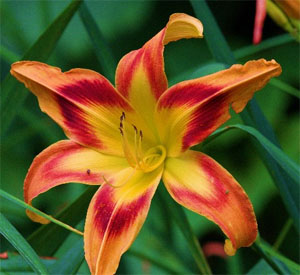Star Lilies Flowers
Lilies are beautiful flowers that have been used for ornamental purposes within gardens as well as for culinary and medical use throughout the ages. They were first documented in Asia roughly three thousand years ago and there are hundreds of varieties available for consumer purchase. Most lilies are hardy and will grow in most soils throughout the United States. Known in the scientific community as HypoxidaceaeHypoxis, the commonly referred to Star lily is a family of a few species that have attractive star-shaped patterns to their petal bloom and unique healing properties that have been documented by researchers who studied it in 2006.

Kinds of Star Lilies
From the swamp to the fields, Star lilies are plentiful in the wild. The Hypoxisexilis is a perennial lily that grows to a mere few inches within the swamplands of Australia. Ironically enough, the larger Star lily, Hypoxis glabella is nicknamed the Tiny lily even though it grows several inches taller than the “Swamp lily”. Tiny lilies are bright yellow and they reside mostly in grassy forests. Hypoxisvaginata is another Australian Star lily that lives on the eastern coast of Australia though this little lily doesn’t require swampy conditions to thrive. Perhaps the most intriguing aspect of the Star lily varieties is the recent findings that it contains active ingredients that can kick-start the development of the AIDS virus.
Lily Botany
Lilies have different shapes, colors and fragrances though the chemistry within themhas long been coveted for healing properties; in most cases. Trumpet-like petals are characteristic of some lilies whereas the most recognizable lilies, Easter lilies, have stark white spathes (the wrap of petals that protects the stamens within) and will bloom facing upward. Lilies range between pinks, reds, oranges, whites and there’s even a variety of water lily that blooms blue. Asiatic lilies tend to have little if any smell whereas Oriental lilies are delightfully aromatic and can fill a room with the pleasant odor of flowers. Ancient Chinese medicine uses “golden needles” (dried or fresh lily petals) to treat some ailments while Chinese cooks use them for seasoning in Hot and Sour Soup. Recently in 2006, the University of Stellenbosch did a study and found that cats with Feline HIV were quick to develop full-blown AIDS when fed Star lily extract and in people, the extract caused bone marrow suppression and generally lower CD4 counts over an eight week trial.
